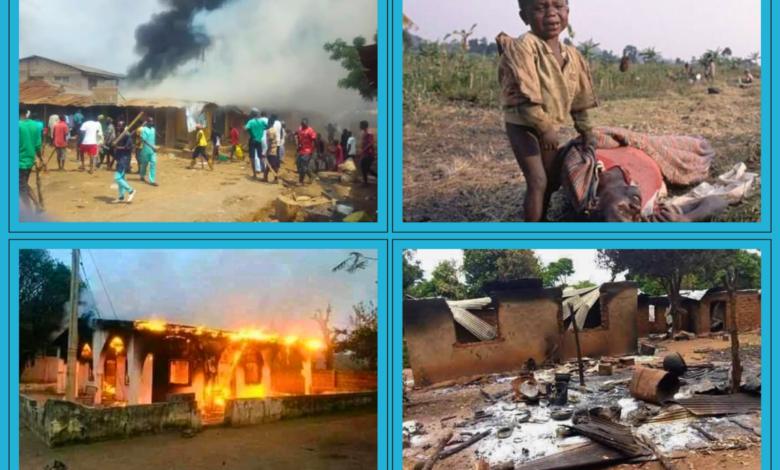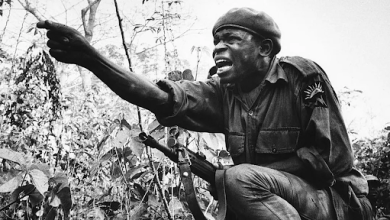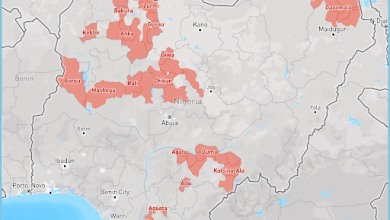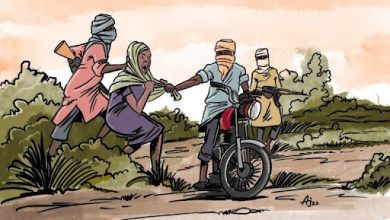More Pictures From Nigeria’s Middle Belt Crisis Have Surfaced. Some Are Misleading
From an ethnic clash in Ibadan several years ago to victims of the 1994 Rwandan genocide, here are the true contexts of these pictures.

The social media narrative around the deadly conflict in Nigeria’s Plateau state and other parts of the Middle Belt region has continued to feature misleading pictures and videos.
The region has faced decades of ethnic and religious violence, which may be traced back to tensions exacerbated during the colonial period. Some aspects of the crisis are a result of a competition for resources between nomadic herders and farming host communities.
On the eve of last Christmas, over 150 people were killed in various communities in the Barkin Ladi, Bokkos, and Mangu areas of Plateau, with locals blaming the attacks on armed herders. This led to many social media users trading blame and accusing different groups of having orchestrated the attacks.
The state government imposed restrictions on movement in Mangu on Jan. 23, but that did not stop the attacks. Over 30 people were killed in a new wave of violence within the following two days. Many buildings were torched, including six mosques and two churches, according to Ado Musa, who reports for Daily Trust.
Again, narratives woven on various social media platforms tend to paint either Muslims or Christians as the greatest victims of the conflict and even accuse security forces of aiding aggressors. This is especially done with the help of pictures showing totally different events, a trend that may make it even harder to restore calm.
We took a look at recent examples.

The picture above was tweeted on Jan. 19 by the Christian Emergency Alliance, giving the impression that it’s a glimpse into “Fulani Islamist militants” attacking Christians in the Middle Belt, specifically Benue state. “Christians in the area had reportedly been threated [sic] in recent days, prompting them to flee. The Islamists followed them in order to carry out their attack. Pray,” it said in a post that was viewed over 24,800 times and attracted hundreds of engagements.
The picture can, however, be traced to a 2021 clash in Ibadan, South West Nigeria, between Hausa and Yoruba settlers.
The confusion may be due to the fact that several news websites have used the same picture in different contexts over the years — to illustrate communal crises in Benue and Ebonyi, clashes in Taraba, and even a case of extrajudicial killing in Borno.

This picture appeared on Twitter on Jan. 25. The poster accused Nigeria’s government of being silent on the killings of Christians in Plateau and other parts of the country. He said this was because both the President and Vice President were Muslim and called on Christians to fight back.
It should be pointed out, though, that the picture is over five years old. It was taken in May 2018 during the burial of 17 worshippers and two priests in Benue state, “allegedly killed by Fulani herdsmen” at a church a month earlier.

This picture was shared on Facebook on Jan. 24 by someone who claimed 96 Muslims had been confirmed killed in Mangu, 10 mosques were burnt, and two schools were damaged.
A reverse image search revealed that the picture is of a mosque in Billiri, Gombe, which was burnt in February 2021 as a result of a tussle over a traditional title as there were fears that the successor to the position would be a Muslim, just as the previous office holder.
The death toll claimed in the post also contradicts the statement from Jama’atu Nasril Islam’s First Aid Group, which said on Thursday that it buried 16 victims from the latest bout of violence.

This picture appeared on Facebook and was used in reference to recent attacks in Mangu, including the burning of houses. However, we traced it to an invasion of several communities in Kogi by suspected herders in March 2018.

There is also this picture. It shows the condition of Christians in Nigeria since Donald Trump left office as President of the United States, the uploader said on Twitter.
But the picture was, in fact, not taken in Nigeria or anytime since Trump handed over power in 2021. It was taken in 1994. According to Getty Images, it shows a Rwandan boy crying over the corpse of his father, who had just “died from cholera in a refugee camp in Zaire” (now the Democratic Republic of the Congo). The photographer, Peter Turnley, has another picture of the same moment on his website.
It is not the first time a series of old or misleading pictures have been used to depict armed violence in Nigeria, especially in the Middle Belt region. HumAngle has debunked similar claims pertaining to the alleged burning of travellers in Jos, vehicle seizures by Boko Haram, extrajudicial killings in Rivers, terrorists ‘chilling’ or biking undisturbed in public, and so on.
FactcheckHub has found that several claims about the latest resurgence of violence in Plateau used unrelated pictures, such as those of the 2022 massacre of church congregants in Owo, an incident in Burkina Faso, a 2021 prison attack in Imo, among others. Dubawa traced a picture of motorcyclists carrying what appear to be dead bodies to a 2022 incident in Taraba. Economy Post also reported that two other videos, supposedly showing gunmen parading a village after a massacre and soldiers escorting bandits to Plateau, were, in fact, clashes between rival extremist groups in North East Nigeria and footage from a truce between state forces and an armed group in Katsina.
The out-of-context use of pictures to describe violent events can have devastating consequences and escalate ongoing conflict.
Shehu Olayinka, a freelance data report and disinformation researcher, believes some of the misleading claims may have been made intentionally to manipulate the emotions of internet users.
“It’s a way to persuade others that we need your support and that something bad is happening. We also need your assistance with voice amplification,” he explained.
However, he added, “the issue with this approach is that rather than encouraging people to work together to resolve the crisis and ensure that it doesn’t happen again, it just serves to highlight the existing divisions and drive them deeper into conflict.”
Support Our Journalism
There are millions of ordinary people affected by conflict in Africa whose stories are missing in the mainstream media. HumAngle is determined to tell those challenging and under-reported stories, hoping that the people impacted by these conflicts will find the safety and security they deserve.
To ensure that we continue to provide public service coverage, we have a small favour to ask you. We want you to be part of our journalistic endeavour by contributing a token to us.
Your donation will further promote a robust, free, and independent media.
Donate HereStay Closer To The Stories That Matter




